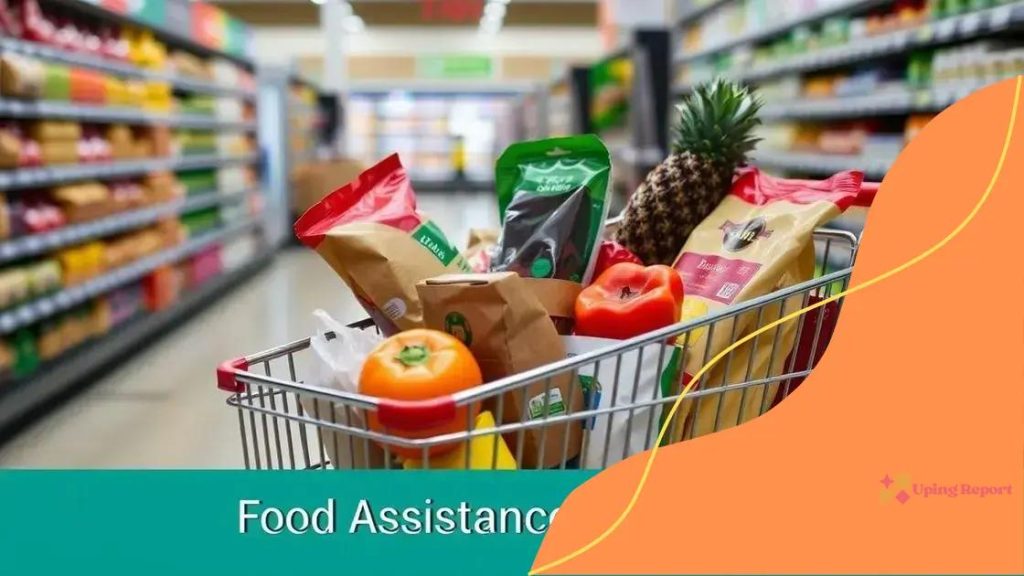New SNAP rules take effect: what you need to know

The new SNAP rules take effect, altering eligibility criteria, income limits, and application processes to enhance accessibility for many families in need of food assistance.
New SNAP rules take effect soon, and many people’s benefits might change. Have you prepared for how these updates could affect your food assistance? Let’s dive into what these changes entail.
Overview of the new SNAP rules
Understanding the new SNAP rules is essential for anyone relying on food assistance. These updates include significant changes and aim to improve how benefits are distributed.
Key Changes
With the new regulations, eligibility requirements have been modified, impacting several applicants. Notably, states have more authority to determine what counts as income when assessing eligibility. This might mean that some individuals may no longer qualify for benefits they previously received.
Strategies for Adjustment
It’s crucial to stay informed about these changes. Here are a few strategies that can help:
- Regularly check your state’s SNAP website for updates.
- Attend local workshops that explain the new rules.
- Consult with community organizations for guidance.
The adjustments to SNAP also include alterations in how benefits are calculated. For instance, some families might receive less in benefits due to stricter guidelines on allowable expenses. It’s vital for households to review their finances to understand how these changes impact their situation.
Keep in mind that the rules aim to address growing concerns about food security. By refining the SNAP process, authorities hope to ensure that assistance reaches those in greatest need promptly and effectively. While the transition may pose challenges, knowledge is power, and staying informed will help you navigate these new guidelines efficiently.
Key changes to eligibility
The key changes to eligibility for SNAP can significantly affect how individuals access food assistance. These adjustments aim to make the program more efficient while addressing the needs of the community.
Income Assessment Updates
One major change is how income is evaluated. Now, certain types of income that were previously considered may no longer count against applicants. This can include some public assistance and other supportive benefits. Therefore, it’s essential to re-evaluate your financial situation to ensure that you qualify.
Asset Limits
Another important aspect of the new eligibility rules is the adjustment of asset limits. Households may now have higher savings and still qualify for assistance. This change ensures that people can build a safety net without losing their SNAP benefits.
- Increased limits on liquid assets.
- Exemptions for certain types of property.
- Saving for emergencies while receiving benefits.
Moreover, the definitions of household composition have also shifted. With the new rules, how members of a household are defined can affect eligibility. For example, students and other specific groups may now have different criteria. Understanding these specifics will be crucial for maintaining access to assistance.
As these new rules take effect, staying informed becomes vital. Regularly reviewing your eligibility status can help avoid unnecessary interruptions in benefits. It’s a helpful practice to consult with local SNAP offices or community organizations for guidance on the latest changes and how they might impact you.
Benefits and drawbacks of the new regulations

The benefits and drawbacks of the new regulations surrounding SNAP are essential to understand, as these changes can impact many individuals and families. Each change brings potential benefits, but it also comes with specific challenges.
Benefits
One significant benefit of the new regulations is the increased accessibility for many eligible participants. With income limits adjusted, more people can qualify for assistance. This is crucial for families facing economic hardships. Additionally, the streamlined application process allows for quicker approval times, helping people get the support they need faster.
- Higher income limits increase eligibility.
- Streamlined application means faster access to benefits.
- More support for households during economic crises.
Another advantage is the focus on improving food security. By making benefits available to a larger group, more families can maintain a stable food supply. This aims to build healthier communities overall, which benefits everyone.
Drawbacks
However, there are drawbacks that come with these new regulations as well. Some individuals may find themselves losing benefits due to stricter eligibility criteria regarding income and household composition. Those who have managed to save some money might be discouraged, as new asset limits can disqualify them from receiving assistance.
Moreover, not everyone may be aware of the changes, which could lead to confusion or misapplication. It’s important to stay informed to avoid losing benefits unexpectedly. A lack of outreach and education concerning these updates might result in those in need not taking advantage of the new opportunities available to them.
Ultimately, while the new regulations have designed more inclusive policies, understanding and navigating the changes is critical for beneficiaries to maximize their access to resources.
How to navigate the application process
Navigating the application process for SNAP can seem overwhelming, but understanding the steps can make it much easier. Whether you’re applying for the first time or renewing your benefits, being informed can lead to a smoother experience.
Gather Necessary Documents
Before starting your application, collect all required documents to verify your eligibility. This may include identification, proof of income, and details about your household. Having these handy can speed up the process.
- Identification documents (e.g., driver’s license, ID card).
- Proof of income (e.g., pay stubs, bank statements).
- Household information (e.g., number of people living together).
Once you have your documents ready, you can begin the application. You have several options. You can apply online through your state’s SNAP website, by mail, or in person at a local office.
Using Online Resources
Applying online is often the quickest way to complete your application. Most state websites have user-friendly forms that guide you step by step. Be sure to take your time and double-check your entries to avoid mistakes that could delay your application.
In-Person Applications
If you prefer to apply in person, visit your local SNAP office. Staff there can assist you with the process and answer any questions. When visiting, remember to bring your documents.
After submitting your application, you may have to attend an interview. This is a standard part of the process where a representative reviews your information. Prepare to answer questions about your financial situation and household composition.
Finally, remember that patience is key. The processing time can vary, so keep checking your application status online or by contacting your local office. Understanding these steps can help you efficiently navigate the SNAP application process, ensuring you receive the benefits you need.
Frequently asked questions about SNAP changes
Addressing the frequently asked questions about SNAP changes is crucial for many individuals and families. Understanding these updates can help beneficiaries navigate their benefits effectively.
What are the main changes to the SNAP program?
The recent changes to the SNAP program include adjustments in eligibility criteria, income limits, and asset assessments. These modifications aim to enhance accessibility for a larger number of applicants.
How do income limits affect eligibility?
Income limits have been revised, allowing more households to qualify for assistance. This means that if you previously thought you earned too much money, you might now be eligible for benefits. It’s essential to reassess your financial situation based on these new thresholds.
Will my current benefits change?
If you are already receiving SNAP benefits, you might not experience immediate changes in your assistance. However, if your income or household composition has altered, it is advisable to report these changes to ensure you continue qualifying under the new rules.
How can I stay informed about SNAP updates?
Staying informed is critical. Regularly check your local SNAP office’s website or your state’s SNAP page for the latest updates and resources. Attending community workshops can also provide valuable information regarding changes.
People may also wonder about how the new regulations impact their ability to save money. Under the new rules, some savings will not disqualify you from receiving benefits, making it easier for households to maintain a financial safety net.
What should I do if I have more questions?
If you have additional questions, consider contacting your local SNAP office directly. Speaking with a representative can provide personalized assistance and clarity about your specific situation.
In conclusion, the changes to SNAP bring both opportunities and challenges for many families. As eligibility criteria evolve, it’s crucial to stay updated and understand how these modifications can affect your benefits. By being informed and prepared, you can navigate the application process more effectively, ensuring that you receive the assistance you deserve. Remember to gather all necessary documents, explore online resources, and reach out for help when needed. This knowledge empowers you to make the most of the support available to you.
FAQ – Frequently Asked Questions about SNAP Changes
What are the recent changes to the SNAP program?
The recent changes include adjustments in eligibility criteria, income limits, and asset assessments to make the program more accessible.
How can I check if I’m still eligible for SNAP benefits?
Review the new eligibility guidelines on your state’s SNAP website to see if you meet the updated criteria.
What should I do if I experience a change in my income?
Report any changes in your income to your local SNAP office to ensure your benefits reflect your current situation.
How can I get assistance with my SNAP application?
You can visit your local SNAP office, apply online, or attend community workshops for guidance on the application process.
